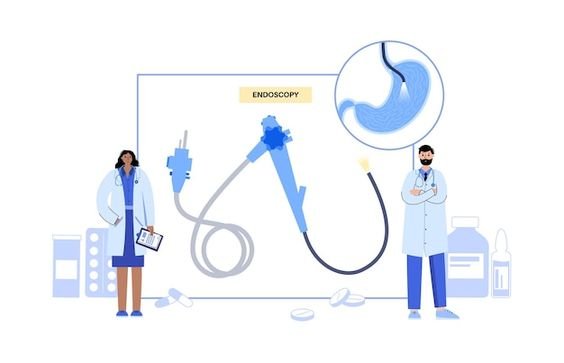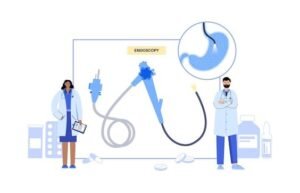

Endoscopy, a vital tool in the diagnosis and treatment of gastrointestinal diseases, has undergone significant technological advancements in recent years. These innovations, including AI-enhanced imaging and minimally invasive tools, are setting new standards in diagnostic accuracy and patient safety. At Trinity Hospital and Heart Foundation, these cutting-edge techniques are being integrated into our gastroenterology department, significantly improving patient outcomes and treatment experiences.
AI-Enhanced Imaging in Endoscopy
Artificial intelligence (AI) is transforming endoscopy by enhancing the ability of gastroenterologists to diagnose conditions with unprecedented precision. AI algorithms are trained to recognize patterns in endoscopic images that might be subtle or invisible to the human eye.
Early Detection of Precancerous Lesions
One of the most promising applications of AI in endoscopy is the detection of precancerous lesions, such as those in Barrett’s esophagus, which can lead to esophageal cancer if untreated. AI models can analyze minute changes in tissue appearance, alerting physicians to potential risks at a much earlier stage than traditional methods.
Real-Time Decision Support
During endoscopic procedures, AI systems provide real-time data analysis, offering decision support that can guide physicians in identifying areas that require closer examination or immediate treatment. This not only boosts diagnostic accuracy but also enhances the efficiency of procedures, reducing the time patients spend under sedation.
Minimally Invasive Endoscopic Tools
The shift towards minimally invasive procedures is a key trend in modern medicine, and endoscopy is at the forefront of this movement. New endoscopic tools are designed to be less invasive, reducing recovery time and discomfort for patients.
Endoscopic Ultrasound (EUS)
Endoscopic ultrasound combines endoscopy and ultrasound to obtain high-quality images of the digestive tract and surrounding tissues. This technique is invaluable for assessing digestive and pancreatic cancers and offers a less invasive alternative to exploratory surgery.
Capsule Endoscopy
For patients, the idea of swallowing a tiny camera encapsulated in a pill might sound futuristic, yet it’s a reality in today’s medical field. Capsule endoscopy allows for comprehensive imaging of the small intestine, an area that traditional endoscopes cannot reach. This tool is particularly useful in diagnosing conditions like Crohn’s disease and small intestinal tumors.
Enhanced Patient Safety and Comfort
The latest endoscopic tools are designed not only for accuracy but also for patient comfort and safety. Innovations such as flexible endoscopes and fine-tuned sedation methods have significantly reduced the discomfort associated with these procedures.
Flexible Endoscopes
Modern endoscopes are more flexible and have enhanced maneuverability, allowing gastroenterologists to navigate the complex landscapes of the gastrointestinal tract more easily and with less discomfort for the patient.
Sedation Techniques
Advances in sedation techniques ensure that patients remain comfortable and pain-free during endoscopic procedures. These improvements also help in quick recovery post-procedure, enabling patients to resume their normal activities sooner.
The Future of Endoscopic Technology
The field of endoscopy is on the brink of more revolutionary changes, with developments in robotic endoscopy and further integration of AI poised to further enhance the capabilities of gastroenterologists. Robotic systems promise even greater precision and control, potentially making complicated procedures simpler and safer.
Conclusion
At Trinity Hospital and Heart Foundation, we are committed to staying at the cutting edge of medical technology. The innovations in endoscopic techniques, particularly the integration of AI and the development of minimally invasive tools, are dramatically enhancing our diagnostic and treatment capabilities in gastroenterology. These advancements not only improve our ability to diagnose and treat gastrointestinal diseases but also significantly enhance patient safety and comfort.
As we look to the future, Trinity Hospital continues to invest in these technologies, ensuring that our patients receive the most advanced care available. By embracing these innovations, we are not just following the trends in medical technology; we are helping to set them.


